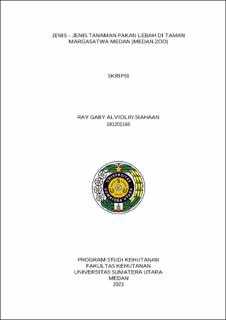| dc.description.abstract | Honey bees are important insects classified under the order Hymenoptera. Insufficient forage can weaken honey bee colonies, resulting in reduced numbers of worker bees, lower honey, pollen, and royal jelly production, and decreased queen bee productivity due to a lack of nectar and pollen as sources of carbohydrates and protein. This research aims to identify the distribution map of honey bee forage plant species in Medan Zoo and identify the types of honey bee forage plants present in the zoo. The study utilized primary and secondary data, employing vegetation analysis techniques with purposive sampling. The collected data focused on nectar and pollen-producing plants. The dominant types of bee plants found in the Medan Wildlife Park are Mahogany, Rambutan and Seri. With diversity including being in abundance. The species diversity index (H') at the seedling level was obtained at 1.04, at the sapling level at 1.23, at the pole level at 2.26 and at the tree level at 1.74. For agricultural plants, there were 8 types of plants with a total of 24 individuals. For ornamental plants, there are 10 types of ornamental plants. For plant types outside the observation plot, 14 types of vegetation were found as a source of food for bees. The distribution of types of plants that honey bees feed on in the Medan Wildlife Park was found to be 80 coordinate points for plants with potential for food, consisting of plantation plants, forestry plants and ornamental plants | en_US |


